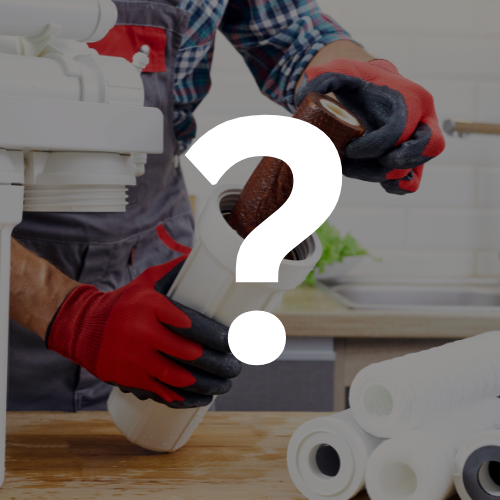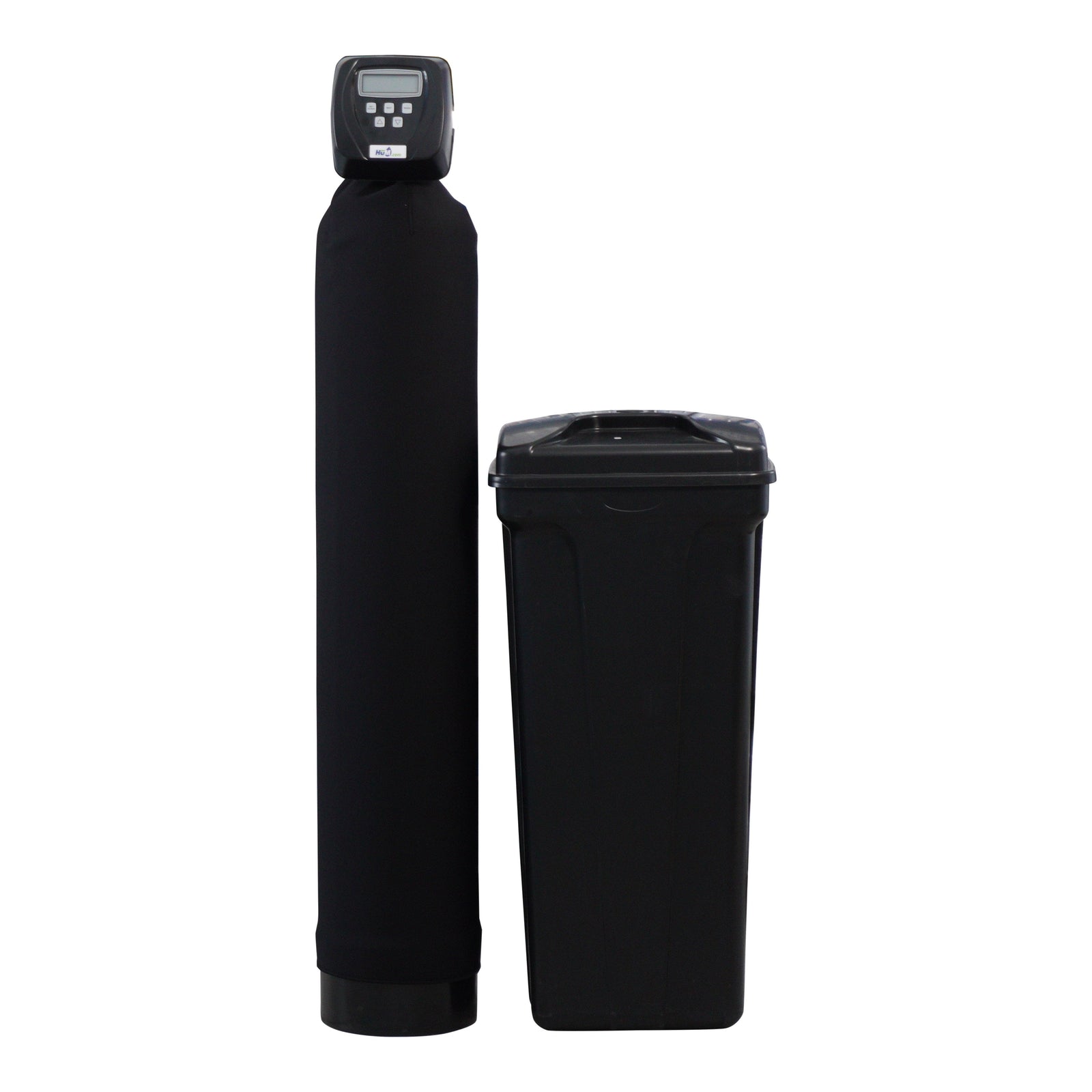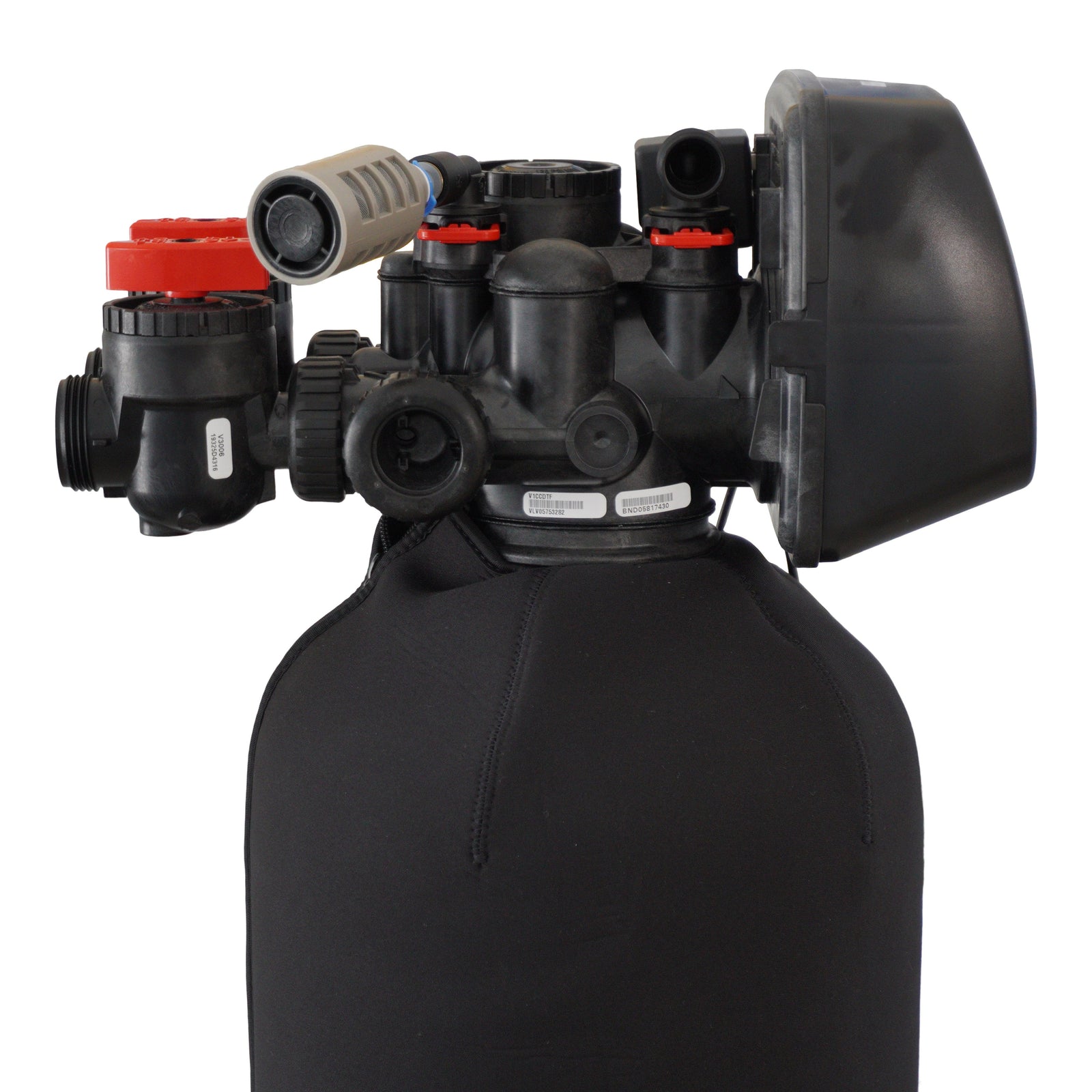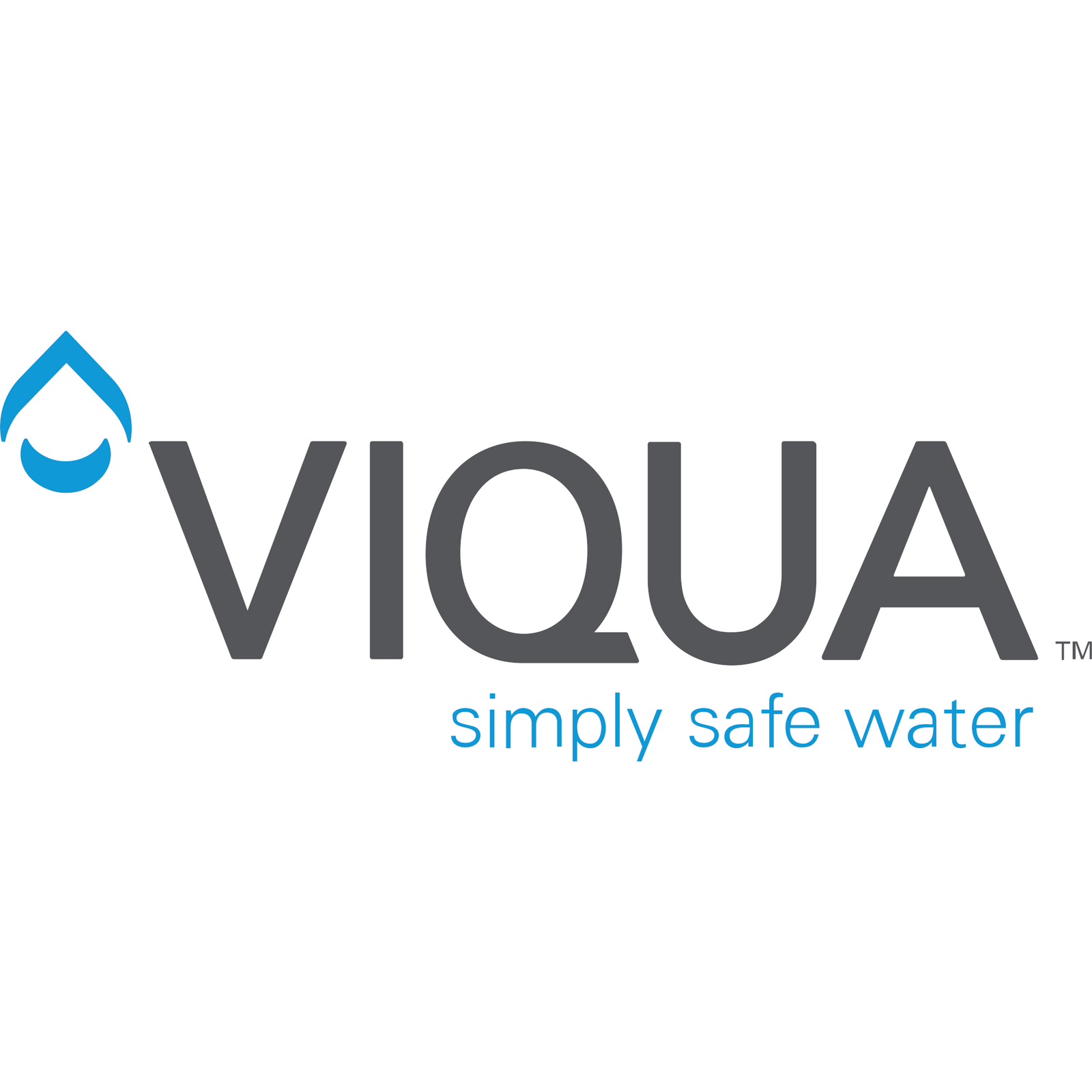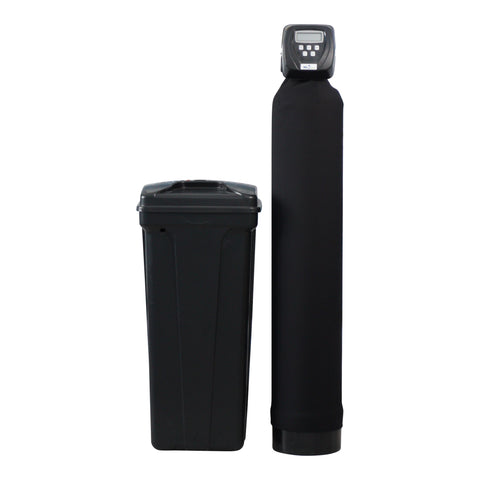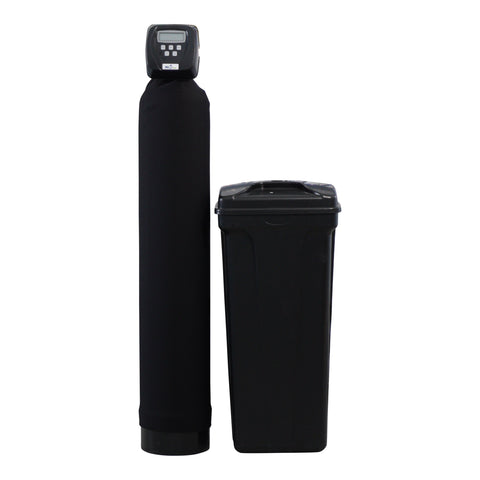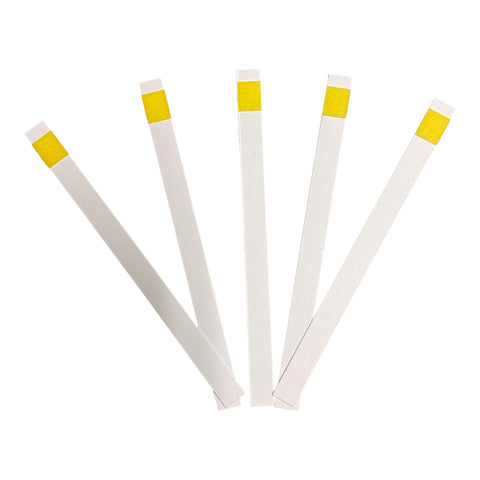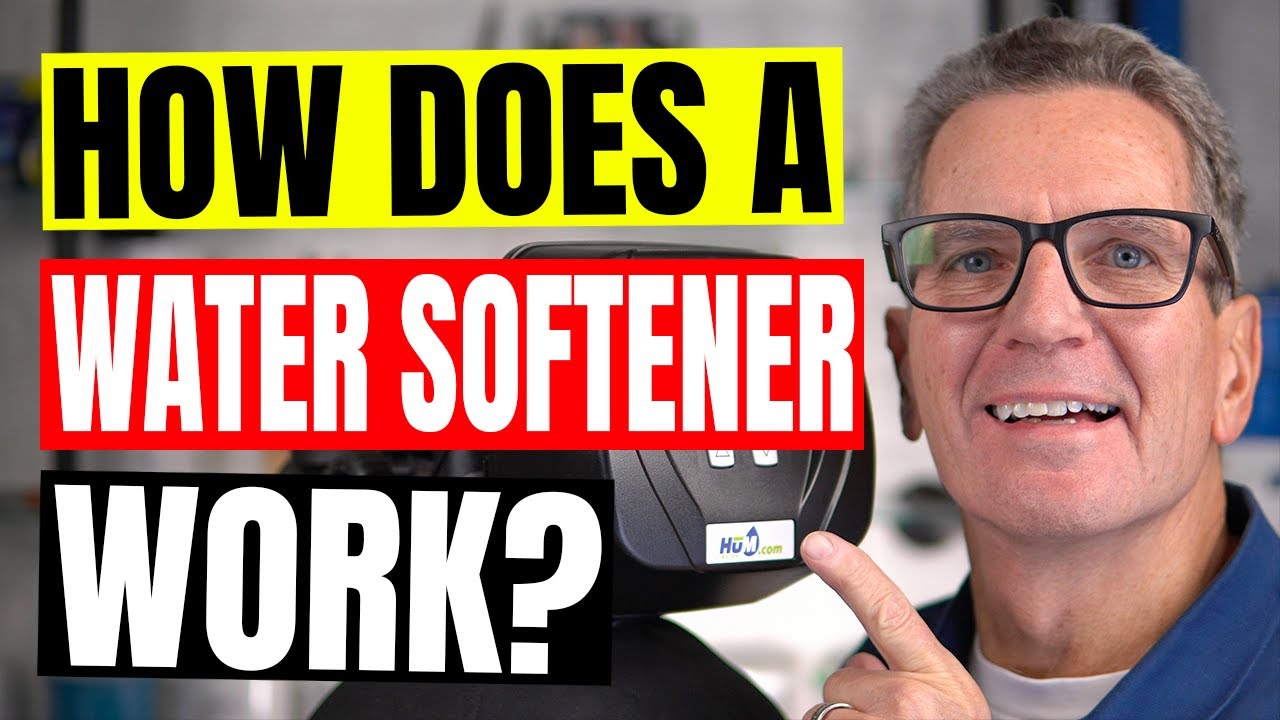
Is your water softener giving you grief? Check out this DIY troubleshooting and repair guide so you can tackle water softener problems like a pro!
STEP-BY-STEP WATER SOFTENER TROUBLESHOOTING GUIDE
Tip #1 - First, make sure you understand how your water softener works!
You can’t fix something unless you know how it’s supposed to work. Do you know how your water softener works when running optimally? If you don’t, no problem! Check out this video before you go any further.
Tip #2 – Test your water’s hardness before and after the water softener.
You’ll need to test both the hot and cold after the water softener. The water after your water softener should have a hardness of zero or one. If your water before and after your water softener is the same hardness, the water softener isn’t working at all. If, however, the hardness is different in the cold and hot water, that tells us that likely you’re running out of capacity.
So now you need to check your settings to make sure they’re correct. This video shows you how to determine the hardness settings based on your water test results. >> WATCH VIDEO
Not sure how or where to have your hardness tested? Try our water test strips here! This video shows you how to use those strips. >> WATCH VIDEO

Tip #3 – Before digging too deep, check some obvious things.
Do you have a 3-way bypass that was left open? See this video to learn more on how to fix this. >> WATCH NOW
Next check that you have enough salt in the brine tank. Typically, if you have a post fill water softener, the salt level should be higher than the water level, but there should be water in there. If yours is a pre-fill water softener, the salt should be about ½ full. Here is a great video about how much salt you should have in your brine tank based on your household. >> CHECK IT OUT
If you’re not sure how to tell if yours is a pre or post fill water softener, take a look at this video to find out! >> WATCH NOW
Tip #4 – Check some basic maintenance items next.
Has the water softener been using about the same amount of salt recently as it always did? If it’s using more salt than usual, then you might have a toilet or some other water using item that keeps running. The more water that runs through your water softener, the more salt you’ll use! Modern metered water softeners like our HUM water softeners will show you when water is being used in your home.
To test it, make sure no one in your home is using any water, then check the display to see if the water softener senses flow. If it does, you’ve got a leak somewhere and need to find and fix it.
If your water softener is using far less salt than usual then you might have a salt clog. This video will show you how to fix that.
Tip #5 – Check whether the media inside your water softener is compromised.
The media inside the water softener can become compromised if you have been running your water softener without salt, with a salt clog, or using it to remove excess amounts of iron and manganese from your water. If that’s the case you’ll need to do a deep cleaning of the media by using a product like Res care. This video shows you how. >> WATCH NOW
The brine tank should also be cleaned out periodically. If yours hasn’t been, now would be a good time to make sure the bottom isn’t full of dirt! This video shows you how. >> LEARN HOW

Tip #6 – Check for changes in the water level in your brine tank.
All of sudden, is there far more water in the brine tank than usual? If so, you could have a clogged injector or compromised pistons. This video shows you how to troubleshoot and repair that concern. >> CHECK IT OUT
Usually when that happens, it means the injector is clogged and you just need to clean or replace it. This video shows you how to clean the injector. >> WATCH & LEARN
Tip #7 – Has the meter stopped working?
If the meter no longer measures how much water you’re using, it won’t tell your water softener when to regenerate. If you have a blank display on your water softener, the meter definitely won’t be working, and this video will show you how to fix that. >> SEE VIDEO
However, if the display is lit up and you run some water but the display shows no flow, you’ll need the advice from this video to get that fixed. >> LEARN HOW
Tip #8 – Check for changes in the water flow throughout your home.
If you’ve noticed that the water flow in your home has slowly become worse, it might be your water softener media is partially clogged and restricting water flow. You can quickly check it out by using your bypass by following the advice from this video.

Tip #9 – Does the water from your water softener stink like garbage?
If your softened water stinks, you’ll need to disinfect the media by following the process outlined in this video.
Tip #10 – Softened water suddenly tasting salty?
This video outlines how you can troubleshoot and fix that for your family. >> WATCH IT NOW
Tip #11 – Does your soft water feel slimy?
We sometimes get complaints about people's water feeling slimy after regeneration. This video will help you troubleshoot that and offer some solutions for your family. >> LEARN MORE
Tip #12 – Do you hear water running to the drain when the water softener is in service? Or it keeps going into Error whenever it goes through a regeneration cycle?
If this is the case in your home, the valve needs to be rebuilt — which, if you have one of our HUM or any Clack valved water softener, isn’t as difficult as it sounds. This video shows you how.
Tip #13 – Does your media need to be replaced?
If your water softener uses salt, goes through its cycles correctly but still doesn’t give you soft water, then the media needs to be replaced. Check this video out for that process. >> WATCH NOW
And there you have it — a comprehensive step-by-step guide to troubleshoot and repair your water softener. Remember, water quality is crucial for your family's health and comfort, and maintaining your water softener is an important part of that. With these expert tips, you're now equipped to tackle any issues like a pro. However, if you encounter a problem that seems too challenging, don't hesitate to seek professional help. Keep conquering that crappy water, one step at a time.

